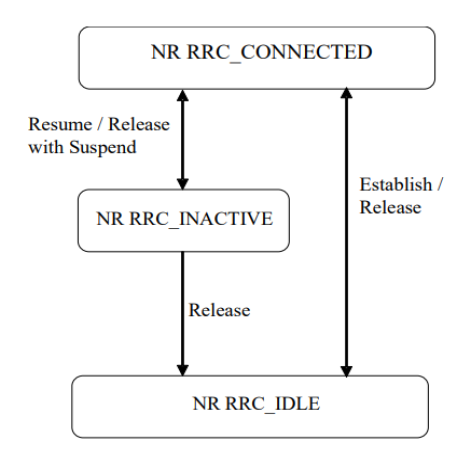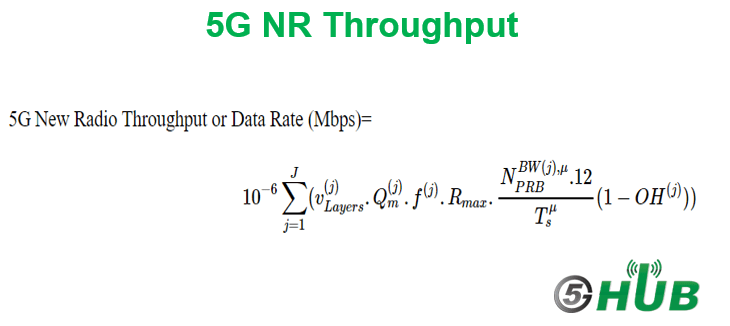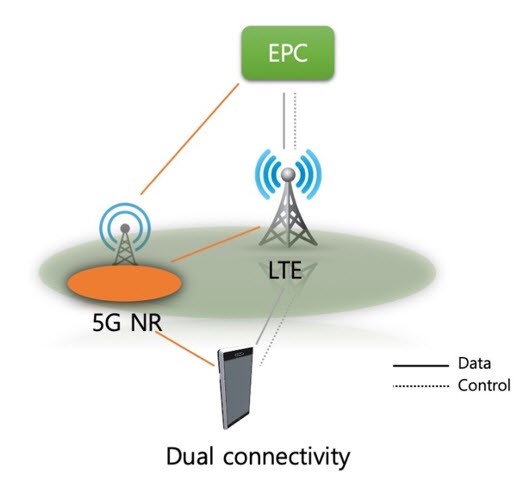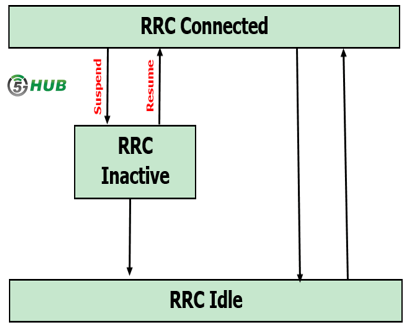Introduction
Although the request for data services is the primary driver behind the growth and evolution of 5G, Voice Service is still an essential part of the mobile communication network.
The adoption of 5G will provide massive Quality of Service (QoS) upgrades including lower latencies, higher speeds, superior network availability, improved reliability, and reduced jitter. This will eliminate voice problems such as blocked calls, skipping, and dropped calls that enterprises and consumers have endured for years with 3G and 4G network congestion. Furthermore, the ability to provide an Ultra-Reliable, Low Latency Communication (uRLLC) 5G network slice for voice communications will solve common voice quality and latency issues.
The journey to 5G has several possible migration paths and steps. Voice Service must be supported in all 5G evolution steps.
What is VoNR?
The Voice over New Radio (VoNR) feature provided in 5G is similar to VoLTE in 4G. VoNR is a voice solution based on IMS in 5G SA architecture.
In VoNR, UE camps on the 5G network, and both voice and data services are provided on the 5G network with gNB and 5GC. When the UE moves out of NR coverage, inter-RAT handover is initiated, and VoLTE is provided in the LTE coverage area instead.
Voice Deployment in 5G Technology
In the early stages of 5G, a network may not support the VoNR feature if the VoNR feature has not yet been deployed on a SA architecture network, or if the network is deployed with an NSA option 3 architecture and lacks 5GC. In NSA mode with EPC, VoLTE is used for voice service using LTE while data is served by NR.
However, in SA mode, VoLTE is not supported. As such, to provide a continuous voice service when a VoLTE call moves to a 5G SA network, the 3GPP has defined voice fallback features.
There are two types of fallback features in 5G: Evolved Packet System (EPS) fallback and RAT fallback.
- In EPS fallback, if a UE tries to use voice services in a 5G network that does not support VoNR, gNB redirects or performs a handover to the LTE network, and consequently the UE can use voice services via VoLTE. After the voice session is terminated, the UE can move back to the 5G network.
- RAT fallback is similar to EPS fallback except that the UE falls back to the eLTE network controlled by the 5GC during the voice session.
Voice Over 5G Migration Paths
The journey to 5G has several possible mobile network migration paths and voice services must be supported in all evolution phases. To ensure seamless voice service continuity and interworking across 4G and 5G networks, 5G VoNR will use the IP Multimedia Subsystem architecture and associated IMS services which are already implemented today to deliver VoLTE services.
There are currently about 1.4 billion VoLTE subscriptions globally in more than 155 networks in over 75 countries. The number of VoLTE subscriptions is expected to grow to 5.9 billion by 2024, representing 85% of combined LTE and 5G subscriptions. For this reason, some of the 5G deployment options will continue to use IMS and VoLTE, enhanced by additional 5G services as they become deployed over the next several years.
Voice Option for NSA
In NSA mode with EPC, VoLTE is used for voice service using LTE while data is served by NR, and the devices will be VoLTE-enabled 4G/5G
dual connectivity devices and this option’s benefit is the rapid launch of devices and initial 5G data services.
In this option:
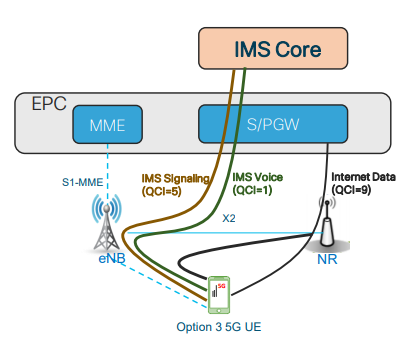
Option 3x Voice Option
- eNB is the signaling anchor.
- User data (e.g. internet) flows from the core to the gNB. From there, it is delivered to the UE directly or via eNB.
- Voice/VoLTE (IMS) traffic does not require a high data rate and can be sent from the core to the UE via eNB radio (eNB Configuration).
- It needs Minor software upgrades to the 4G EPC and 4G RAN.
Voice Options for SA
- VoNR is a complex service requiring support in the UE, RAN as well as 5GC.
- Achieving good voice quality also requires careful optimization and tuning of the radio network.
- Operators may introduce VoNR in their networks in a stepwise manner. To support different deployment scenarios, 3GPP has specified two different mechanisms for voice, EPS Fallback for Voice Service and Native Voice Service over 5GS (VoNR).
There’ll be two stages for implement Voice over 5G SA network architecture as below:
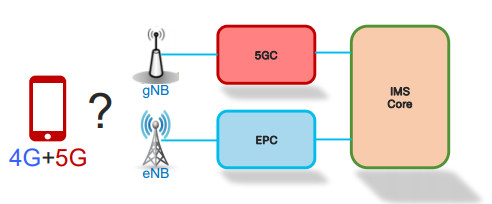
Access Selection for Voice
- 5G SA Initial Phase, 5G data where coverage is available, Evolved Packet System (EPS) technology for voice fallback to the LTE network, completing the connection through VoLTE.Here the devices should support VoLTE and are EPS enabled.
Note: It requires software upgrade of IMS, upgrade to a Cloud-based 5G NGC, upgrades to the 4G and 5G RAN. - 5G SA Mature Phase (3GPP SA Option 2), 5G New Radio coverage for voice (VoNR), and data with seamless mobility between 4G and 5G with voice handover. Here 5G devices that support VoNR and core network protocols, backwards compatible with previous-generation 5G devices.
Note: In areas without 5G NR coverage, Packet Switched Handover (PSHO) can be used to switch sessions from 5G NR to LTE radio so that VoLTE can take over voice services, ALso 4G and 5G session control is integrated into the IMS for processing, avoiding complex cross-system. handover.
Conclusion
- Voice services will remain an important and integral part of 5GS.
- Voice services in 5GS are IMS-based.
- Migration options for voice services need to be supported.
- Voice requires careful optimization and tuning of the network to support the needed Quality of Service (QoS) for voice.
- Device availability and support of voice services in 5GS are critical to the early adoption and migration of voice services to 5GS.
References
- 3GPP TS 23.501, System Architecture for the 5G System.
- ITU, QoS Requirements of IMT-2020.
- Ericsson, 5G voice – network evolution aspects.
- Oracle, 5G, and Cloud: Bringing Today’s Voice Network.
- Cisco, Voice over New Radio.


